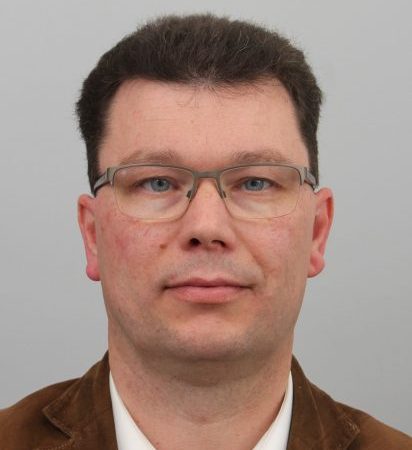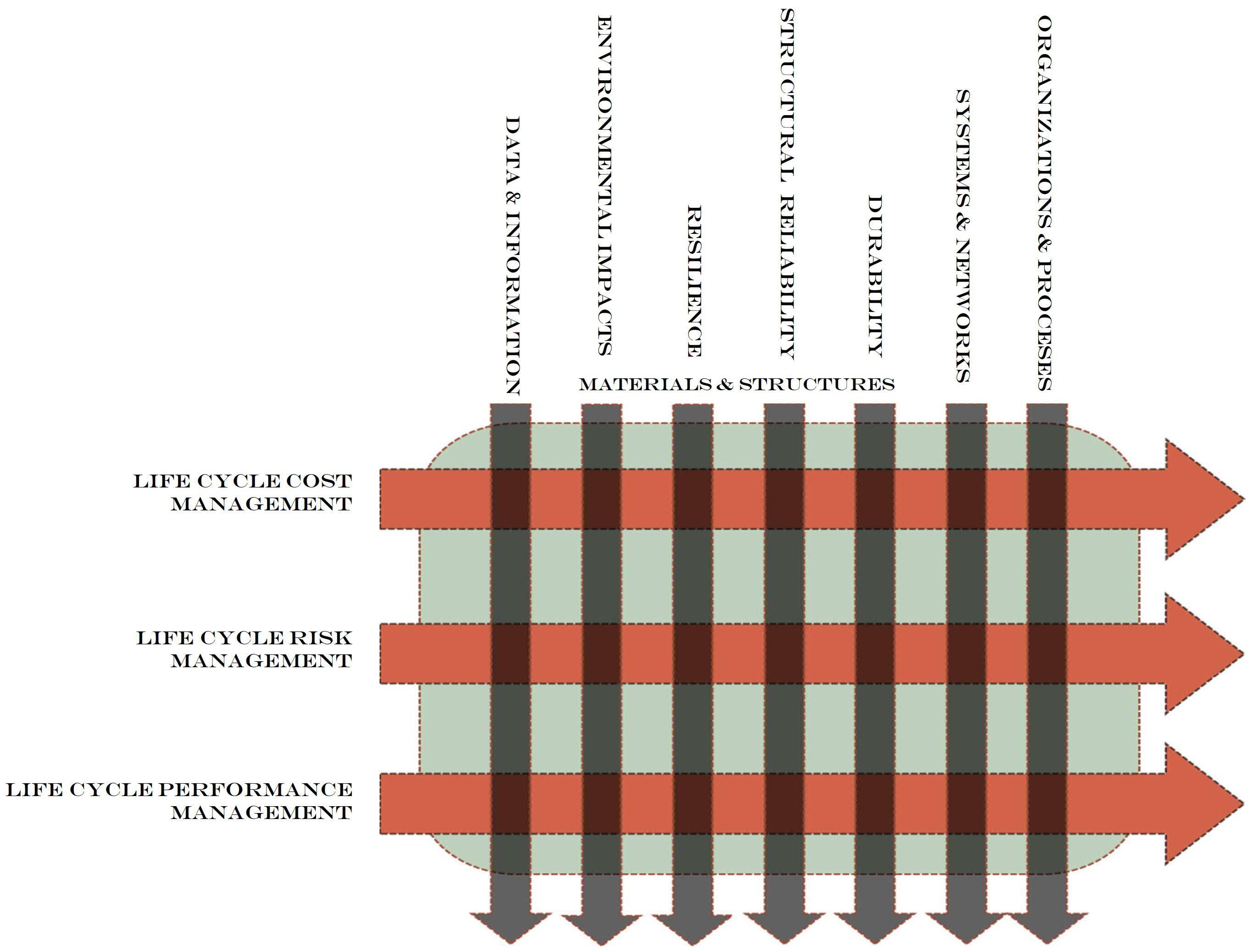
Jaap Bakker (RWS)
Utrecht, The Netherlands

Bart Luiten (TNO)
Delft, The Netherlands
Improving the performance of our assets over their life cycle relies heavily on the timely availability of accurate, actual and accessible data. There are many new developments in data technologies that are helping us to overcome the challenges on data management improving the way we manage the performance of assets over the life cycle management. Typical challenges related to data in Life Cycle Management are:
- Integrating BIM and GIS models
- Using data analysis to predict and quantify current and future risks
- Integrating required, designed and actual performance using linked data
- Supporting Life Cycle Management with big data and machine learning
- Analysing data to support life cycle cost prediction
- Visualizing in the asset and its data over the life cycle

Elisabeth Keijzer (TNO)
Delft, The Netherlands

Daan Schraven (TU Delft)
Delft, The Netherlands
Sustainability is a relative new perspective to Life Cycle Management. Infrastructure should be designed, constructed and managed during their life cycle in such a way that the harmful impacts for the environment are minimized. Key aspects that should be considered within sustainability assessment are for instance use of resources, energy and land, emissions to air, water and soil, pollution of environment by noise, vibrations and waste, and impact on species and ecosystem and society.
Typical topics of Life Cycle Management with respect to sustainability: How can risks of harmful impacts due to the production, construction and maintenance of infrastructure on environment and society in the future be reduced? How can sustainability of infrastructure assets and components be measured? How do we change perception of used material from waste to value? How do we manage our material flows? How can we predict what secondary materials become available and at what moment?

Ferdinand Diermanse (Deltares)
Delft, the Netherlands
Resilience in Life Cycle Management deals with resilient life cycle engineering, resilient life cycle design & construction, and resilience in the operation and maintenance. Central issue for this topic is: “How to anticipate possible future changes and extreme events (Life Cycle Risk Management).”
Traditionally, fixed design horizons are used in the design and maintenance. But, along the way the actual ‘optimal’ life time can be affected by external developments like climate change and socio-economic changes or transitions. This session discusses on how to deal with such (deep) uncertainties in the design?

Agnieszka Bigaj-van Vliet (TNO)
Delft, the Netherlands

Fabio Biondini (Polytectinico di Milano)
Milano, Italy

Robby Caspeele (Ghent University)
Ghent, Belgium
Structural reliability deals with the probability of failure of structures over the remaining life. Structural reliability may change over time due to changes in the loads on the structure, changes in the strength of the structure, and changes in the remaining life time of he structure. Reliability can be assessed more precisely if uncertainties in loads and strength over time are known better. Structural reliability plays a major role in design guidelines, aiming to keep risks over the life cycle of a structure within accepted boundaries. For ageing structures structural reliability needs to be managed. Changes in loads and strength over time need to be monitored. Uncertainties need to be assessed and managed. Reliability of existing structures need to be evaluated over time, and sometimes re-calculated. Investment in managing the structural reliability need to be evaluated on costs and benefits over de life cycle.
In this workshop, we distinguish two distinctive pillars of the Life Cycle Management of the Structural Reliability of assets, both with a dedicated session.
Structural Reliability: Modelling

Willy Peelen (TNO)
Delft, the Netherlands

Dan Frangopol (Lehig University)
Bethelem, USA

Jose Matos (University in Minho)
Guimaraes, Portugal
Structural reliability deals with the probability of failure of structures over the remaining life. Structural reliability may change over time due to changes in the loads on the structure, changes in the strength of the structure, and changes in the remaining life time of he structure. Reliability can be assessed more precisely if uncertainties in loads and strength over time are known better. Structural reliability plays a major role in design guidelines, aiming to keep risks over the life cycle of a structure within accepted boundaries. For ageing structures structural reliability needs to be managed. Changes in loads and strength over time need to be monitored. Uncertainties need to be assessed and managed. Reliability of existing structures need to be evaluated over time, and sometimes re-calculated. Investment in managing the structural reliability need to be evaluated on costs and benefits over de life cycle.
In this workshop, we distinguish two distinctive pillars of the Life Cycle Management of the Structural Reliability of assets, both with a dedicated session.
Structural Reliability: Monitoring

Henk Jonkers (TU-Delft)
Delft, the Netherlands

Mitsuyoshi Akiyama (Waseda University)
Tokyo, Japan
Durability is the ability of a physical product to remain functional, without requiring excessive maintenance or repair, when faced with the challenges of normal operation over its design lifetime. Structures will age in time, and at some time need maintenance or need to be replaced. In Life Cycle Management durability issues need to be addressed. Ageing leads to risks an cost over the life cycle. Optimal maintenance and repair strategies deliver optimal performance over the life cycle.
Typical topics of Life Cycle Management and durability are: durability prediction and modeling, structural health modeling, structural assessment models, life cycle optimization modelling.

Frank den Heijer (Han University of applied sciences)
Arnhem, the Netherlands
Civil infrastructure often bears functions related to flood risk reduction, water management, navigation, mobility or a combination of those. Existing infrastructure generally has long technical life spans, but has not been generally designed to adapt for changes in use, climate or regulations. Currently, a considerable part of the (water) infrastructure is approaching the end its service life and large investments are required for rebuilding, adjusting, renovation and maintenance.
This theme session will focus on the life cycle assessment and management of water infrastructure like dikes, bridge piers/piles, sluices, locks, retaining walls, sewage and drinking water, harbor infrastructure, reservoirs and dams, etc; The focus of their management is shifting from condition and risk management, to predictive and adaptive management and from asset level to system or regional level. These trends require the search for smart solutions from technical, financial and governance point of view, to meet present day adaptive, societal and environmental requirements. The objective of this theme session is to exchange and discuss the best approaches and innovative practices in Life Cycle Engineering in water infrastructure.
We welcome abstracts that show
- new life cycle management approaches to cope with the above challenge, like adaptive pathways for changing demands and requirements, scenario analysis, societal cost benefit approaches, system optimization and planning
- new life cycle engineering approaches for the life time prediction: intervention levels, deterioration models, inspection and monitoring

Greet Leegwater (TNO)
Delft, the Netherlands

Petra Paffen (RWS)
Utrecht, the Netherlands
Road networks often have long life cycles. Roman road systems constructed 2000 years ago can still be recognized in the landscape. System- and network requirements may however change over time, so systems and networks also need to be adapted during their lifetime. Keeping systems and networks up to date and fit for purpose, especially on the long term, is a challenge. Lack of long term thinking will result in badly functioning, not fit for purpose, or even unsafe networks.
The Life Cycle Management of road systems typically needs to deal with system optimization, network management and optimization over the life cycle, while anticipating diverse challenges like aging, climate change and developments regarding heavy vehicle transport.

Marcel Hertogh (TU Delft)
Delft, the Netherlands

Jenne van der Velde (Rijkswaterstaat)
Utrecht, the Netherlands
Implementing Life Cycle Management in organizations and processes is a challenge. Traditional steering principles on short term issues are deeply in our cultures. Even tough the awareness on life cycle thinking grows, change is still hard to make. Both human factors and lack of technical tooling to support the changes play a role. New management concepts are needed, supported by proper tooling to make that change.
Typical topics of Life Cycle Management and Durability are: modeling and simulation of deterioration process, life cycle performance assessment of deteriorating structures, structural health monitoring, and maintenance strategy optimization.


